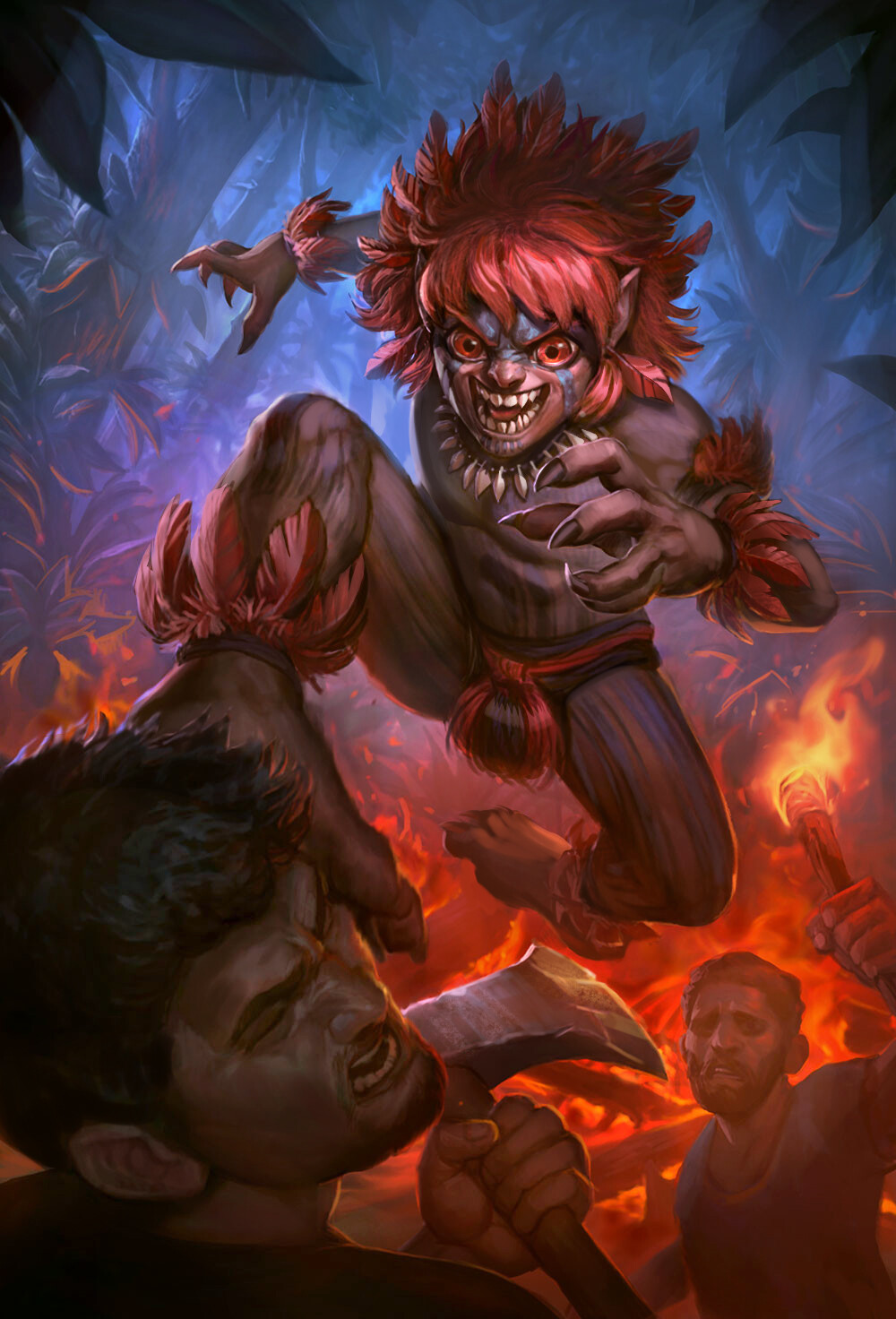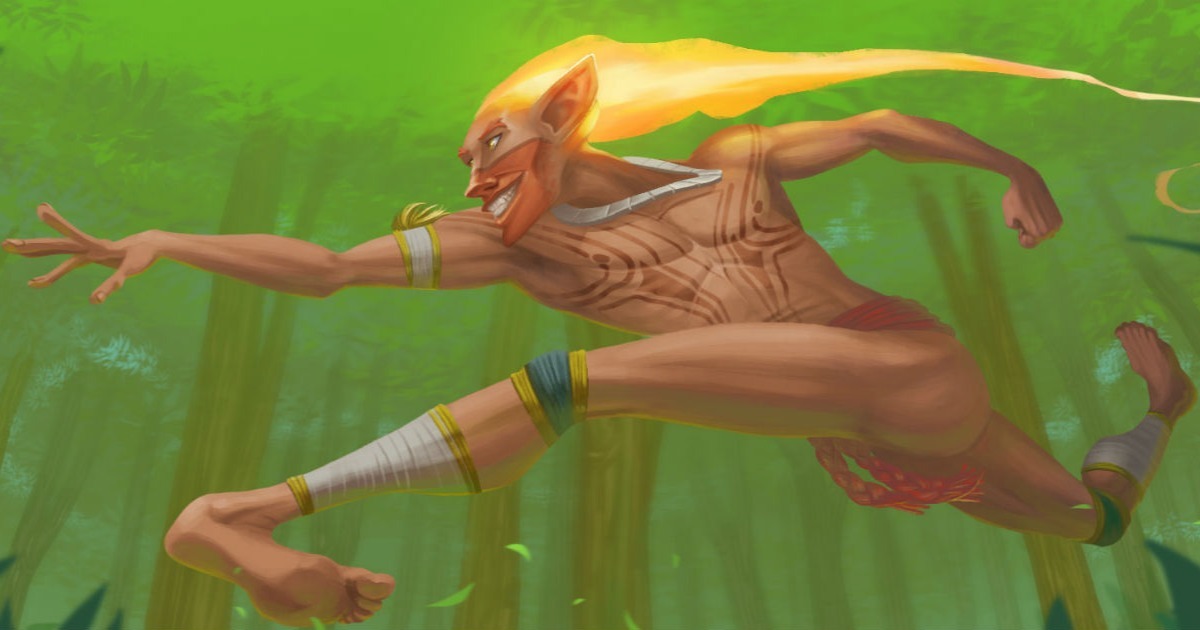Brazilian Spirituality
Brazil has always had strong beliefs in superstition, the idea first brought by the Portuguese by christianity and slowly growing, changing and merging with beliefs from African religions, brought by the slaves, such as Candomblé and Umbanda. These supersticions were also merged with beliefs found from native brazilian tribes. These enormous mix and match of different religions its what created the popular ideas that are ingrained within our culture of Saints, Orixás, Simpatias, superstition, Amarração and Folclore.
Brazilian
Saints
The Saints all hail from the Christian church, but wheter you are a believer or not, most brazilian have pictures and statues in their homes, or have chanted a prayer for one of them, or even heard the folclore stories about others.
Nossa Senhora da Conceição Aparecida
One of the most famous and adored Saints in Brazil, Nossa Senhora is the Patroness of our country. In other words, she was the Saint assigned by the Christian God to watch over the country and its people.
The story goes that a group of fishermen went off to the river to catch fish for the visiting duke of the region, although it was low season. Therefore they prayed for Virgin Mary to bless them. After a while, when bringing the fishnet again to the boat, they found the statue of a woman, without the head, when throwing the net once again, they found the missing part and connected to the body.
Once assembled, they named the rigorous statue Virgem Aparecida (translating to the Virgin that Appeared). And after that, fish started to fill their nets so much that they were forced to go back to the mainland or else the boat would sink with so much food. In matters of representativity this Saint also boosted the numbers of believers in a significant amount, mostly due to the fact she was the first black saint Brazilians have ever seen, and being such a mixed country, having a saint they can associate with helps grow their faith.
São Longuinho
Everyone in Brazil that has lost something have had their mother's tell them to ask São Longuinho to retrieve it. São Longuinho is the Saint of Lost Items and of the forgotten. Although his story talks about him being a fierce warrior with a lance, most people just remember him when they lost something. If they want help of São Longuinho to find the object there is a chant to be said;
"São Longuinho, São Longuinho
se eu achar (missing item)
te dou 3 pulinhos!"
The translation is roughly 'Saint Longuinho, Saint Longuinho, if I find (blank) I will do 3 jumps"
They say that after you chant this, São Longuinho will help, and if you do find the missing item, you have to do the 3 jumps you promised to the saint. Depending on how bad u want to find the item, you can promise to do even more jumps for him!
Negrinho do Pastoreiro
A sad folclore legend with a heavy entonation of afro chrstianity. The legend started during the XIX century in the south of the country. According to the story, this young orphan slave used to take care of 30 of his master's horses, and one day, one of the horses espaced. Furious, the Master tortured the boy by wiping him. He then told the boy to find the horse, but after a whole day and without being able to capture the lost horse. The master tied up the boy over a ant hill, full of bruises, and leaving him to be eaten and killed by the insects. The next morning however, he woke up and was in shock when he went to the ant hill. Not only was the boy healed and happy on top of the lost horse, but Virgin Mary was by his side, since she was his Patroness.
On the south of Brazil, some people also believe that if you lost something and leave a lit candle overnight at the bottom of an ant hill, Negrinho o Pastoreiro will help you find it.
Folkclore
When I was a kid, I used to love the folkclore. It was a huge part of the books and series I consumed, tales my nanny would tell me, and even nursery rhymes. Looking at it now, I can see all the culture that got mixed together as to bring in these believes, Afro, Christian and Indigenous tales created these creatures that are both fascinating and scary for us brazilians.
Sources:
https://jc.ne10.uol.com.br/social1/2021/12/14917649-saiba-a-diferenca-entre-simpatia-oracao-e-amarracao.html
https://pt.wikipedia.org/wiki/Religi%C3%B5es_afro-brasileiras
https://pt.wikipedia.org/wiki/Nossa_Senhora_da_Concei%C3%A7%C3%A3o_Aparecida
https://www.todamateria.com.br/negrinho-do-pastoreio/
https://www.todamateria.com.br/lendas-do-folclore/
https://medium.com/sobre/sobre-simpatias-f30e31cfb4ff
https://dhojeinterior.com.br/conheca-os-segredos-por-tras-das-simpatias/
https://sonhoastral.com/articles/2412
Saci-Pererê
Saci-pererê is a very mischievous character who enjoys playing games with animals and people.
According to the stories, his main pranks are braiding animals' tails at night, hiding objects (such as seamstress' thimbles), whistling very shrilly to scare travelers, exchanging the salt container for the sugar container, and distract the cooks for them to burn the food.Saci is the guardian of herbs and medicinal plants, so it confuses people who try to get them without authorization. He knows the preparation techniques and knows how to use the plants for medicinal purposes.
The legend of Saci-pererê has existed since the end of colonial times and has its origins in the indigenous tribes of southern Brazil.
The term “Saci” comes from the Tupi term sa'si, which is related to a bird, which is known by the names “Saci”, “Matimpererê” or “Martim-pererê” (in Tupi: matintape're).
Initially, Saci was portrayed as a black and devilish character, who had two legs and a tail.
From the African influence, he lost his leg fighting capoeira and acquired the habit of smoking the pito, that is, the pipe.
The red cap of the Saci-pererê, in turn, comes from the folklore of northern Portugal. It was used by the legendary Trasgo, who possessed supernatural powers.
The legend is told in all Brazilian regions and, therefore, the story changes according to the location. In some places, it has different names such as: Saci-Cererê, Matimpererê, Matita Perê, Saci-Saçurá and Saci-Trique.


Curupira
The Curupira, known as the “forest demon”, he whistles and uses false signals.
It gathers many stories that involve inexplicable mysteries, for example, the disappearance of hunters, as well as the forgetting of the paths.
It is said that with its feet turned backwards, the Curupira deceives and confuses people who damage its habitat, for example, hunters, loggers, lumberjacks, etc.
There are controversies about the creation date of the Curupira legend. However, the Spanish Jesuit priest José de Anchieta (1534-1597) wrote about the character in the XVI, calling him a “demon that attacks the Indians”.
For the natives and the pioneers, the Curupira was considered a dangerous, demonic, malicious creature, much feared.
This is because this character has been associated with many cases of violence, sexual abuse, child abduction and psychological horror.
Capable of bewitching children, the Curupira kidnapped them and only after seven years were they returned to their parents. Therefore, he became known as the evil spirit, willing to haunt the nights of the natives and the pioneers.

Mula sem Cabeça
The mule has steel or silver horseshoes and neighs so loudly that it can be heard many meters away. It is also common to hear the animal sobbing like a human.
It is said that the mule usually runs through the woods and fields scaring people and animals.
There are different versions of the origin of the headless mule;
In one of them, it is said that if a woman slept with her boyfriend before marriage, she could be bewitched and become a headless mule.
This version was linked to the traditions of families that sought to control their daughters' love relationships. It was a way of keeping them within the moral standards of the time.
Another version of the legend states that any woman who had love affairs with a priest would be punished and turned into a headless mule.
Of a moral and religious nature, this legend was intended to intimidate women who considered maintaining a romantic relationship with the priests of the Catholic Church.
According to the narrative, the enchantment took place on Thursday nights, when the woman was transformed into a headless mule.
She threw fire from her neck and ran through the woods and fields. With its paws, it tore to pieces the animals and the people that appeared in front of it.
Simpatias e Amarração
All around Brazil, you will see posters saying Ammaraçao that will bring your loved one back, they are ussualy associated with black magic.
On the other hand there are simpatias (sympathys), considered white magic (good magic), although most brazilian with their heavy christian beliefs, wont even admit to it being a form of magick.
Sympathys are small chants or things you do grant you things; longer hair, a boyfriend, good vibes, etc.
Simpatia de Santo Antônio
Wearing White in New Year's Eve
Jumping 7 waves in New Years